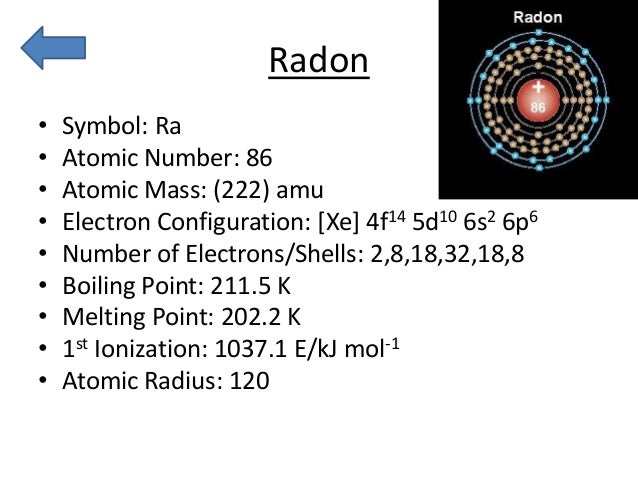Radon is a radioactive gas that forms naturally when uranium, thorium, or radium, which are radioactive metals break down in rocks, soil and groundwater. People can be exposed to radon primarily from breathing radon in air that comes through cracks and gaps in buildings and homes. Because radon comes naturally from the earth, people are always exposed to it.
See also:
- Radiation Protection Division: Radon - https://www.epa.gov/radiation/radionuclide-basics-radon
- EPA's Integrated Risk Information System profile on Radon 222 [CASRN 14859-67-7] is located at: https://cfpub.epa.gov/ncea/iris/iris_documents/documents/subst/0275_summary.pdf

Atomic Mass In Radon
Oem modems driver download. The average global outdoor radon level varies between 5-15 Bq/m3, equal to 0.135-0.405 pCi/L. For every 99.9 Bq/m3, or every 2.7 pCI/L increase in long term radon exposure, lung cancer risk rises 16% 4. The thing to remember is that the lower the level, the lower the risk.As radon gas can accumulate indoors, it is important to monitor daily.
Radon Atomic Mass
Parallels scsi & raid devices driver download for windows. Read more about Radon at www.epa.gov/radon
Radon Average Atomic Mass
- Element Radon (Rn), Group 18, Atomic Number 86, p-block, Mass 222. Sources, facts, uses, scarcity (SRI), podcasts, alchemical symbols, videos and images. Jump to main content.
- Toll-free in Massachusetts only Call Radon Hotline, Toll-free in Massachusetts only at (800) 723-6695. The operating hours are Mondays through Fridays from 8:45 a.m.-5 p.m. To leave a message when calling outside of operating hours, please follow the language prompts (1 for English, 2 for Spanish), and then dial 2 to reach the office mailbox.
